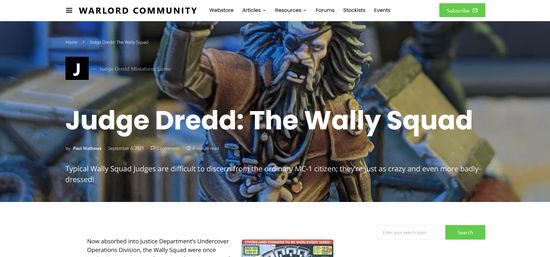The Model
The Tiko Destroyer comes in two parts - forward and aft sections (sans basing). Well made, minimal mold lines and flashing.
Supplies:
- Acrylic Paints
- Paint Brushes
- 10/0 Spotter
- Small Angle Shader
- Medium Angle Shader
- Art Pens
- ZIG Micron 005 (Black)
- Tools
- Dental Picks
- Small Burnishing Tool/Rub-On Transfer Tool (metal)
- Other Supplies
- 0000 Steel Wool
- gesso
Steps
- Clean the miniature in warm water and soap, with a toothbrush, to ensure that any mold-release compound has been removed. Dry with paper towel.
- Examine the mini, and determine where to have a mirrored/shiny metal/glassy surface (regardless of color).
- Use the steel wool to polish those areas. Don't worry if you polish the surrounding areas, a little bleed over won't be a problem (as you will probably paint over them).
- Use the burnishing tool, dental pick, or equivalent; rub the metal in the desired area until a mirror-like finish is achieved.
- Prepare the gesso-based primer: In a 4 oz bottle (plastic travel bottle for shampoo and other liquids), add 2 oz of gesso, 2 oz of water, 1 tsp (5 ml) of isopropyl alcohol. Shake bottle to mix. Primer done! Must be shaken before each use, because the gesso will settle.
- With the angle shader, carefully apply the primer to all areas without a mirrored finish. Immediately wipe up any mistakes with a moist cloth - this primer mix is forgiving when still wet. Allow to dry (overnight preferred, but 1-2 hours will do).
- Paint the areas that are difficult to get to (gun bases, nooks and crannies... most of which was in Black Pearl for this mini). Be careful not to get any paint on the mirrored areas. Wipe up mistakes, quickly, with a moist cloth.
- Use the spotter or angle shader to apply the Tamiya clear paints onto the mirrored areas (in this case, Blue (aft waist section and panels), Yellow (panels and masts), and Red (exhaust ports). Paint sparingly. Better to paint extra coats than to try to remove it. Use smooth strokes to avoid unevenness, spotting or pooling. Again, thin coats are best. Once all mirrored finish areas have been painted (actually, more like tinted...), allow to dry overnight.
- Paint the base color (in this case, Red Copper). Wipe up mistakes, quickly, with a moist cloth. For tighter areas (corners, gaps, overhangs, etc.), try to "push" the paint into those areas. Allow to dry overnight.
- Use a black wash (2-3 drops of flat black and 1 tsp. water) over non-mirrored-finish areas. Use the brush to "push" the wash into tight areas. Allow to dry overnight (or at least 6 hours). If you accidently put too much on, dry the paint brush on a paper towel, then use it to absorb the excess.
- Use the ZIG Micron pen to outline areas (in this case, the panels, ridgelines, any significant changes in the curvature or smoothness of hull). The pen has such a fine tip, it should be able to put the pupil in the eye of a 6mm figurine (ok, maybe a little exaggeration, but it has a really fine tip - 0.2 mm, maybe). Also, at this point, you can use Micron pens (of any color) to draw designs, lettering, etc onto the mini.
- At this point you are done - congratulations! You can apply Dullcote, but avoid the mirrored as this may, well… dull the effect!
Tips:
- Steadying the figure or your hands
- Rest the mini in a cloth or foam, steady the mini in one hand, while bracing that hand on the table. Steady the painting hand by resting it on the table as well.
Or, cup your hands together (like getting water from the faucet), then hold the mini in the fingers of one hand and hold the brush in the fingers of the other hand. Brace hands against each other, and that helps steadies the mini and the paintbrush.
Credits:
For steps 3, 4, and 8, I used a technique that I learned from a Terry Miesle article on the Starship Modeler website.














